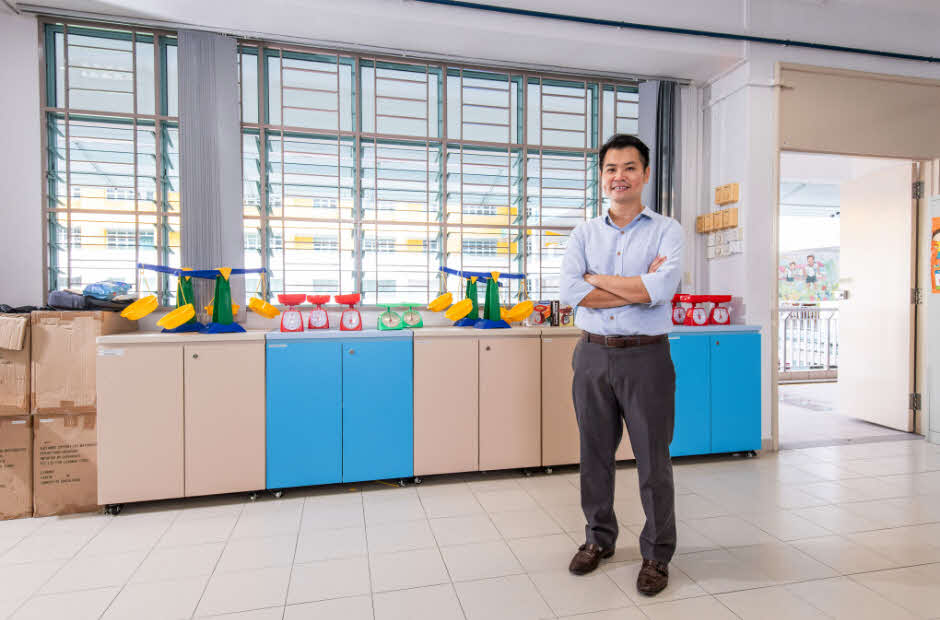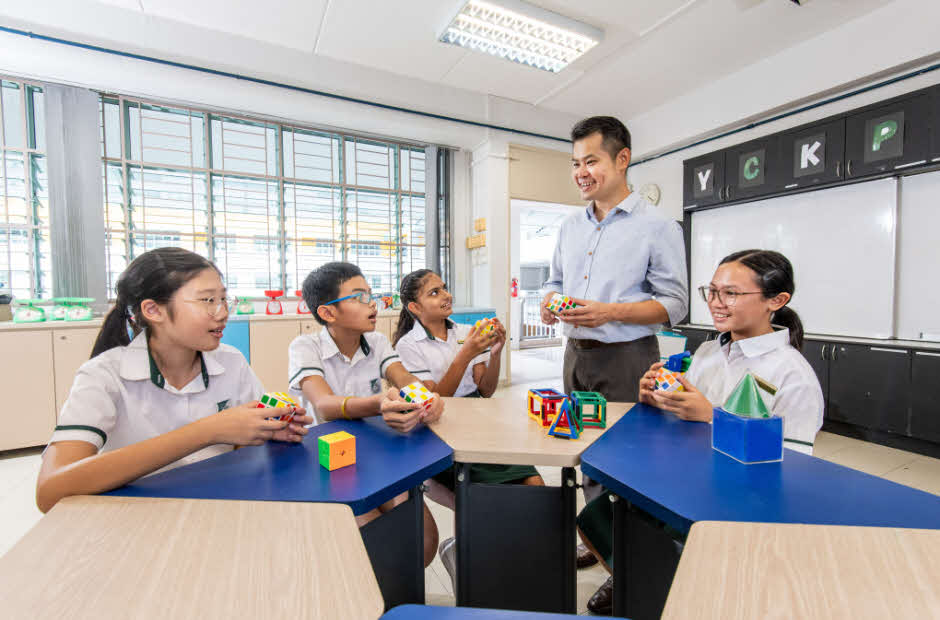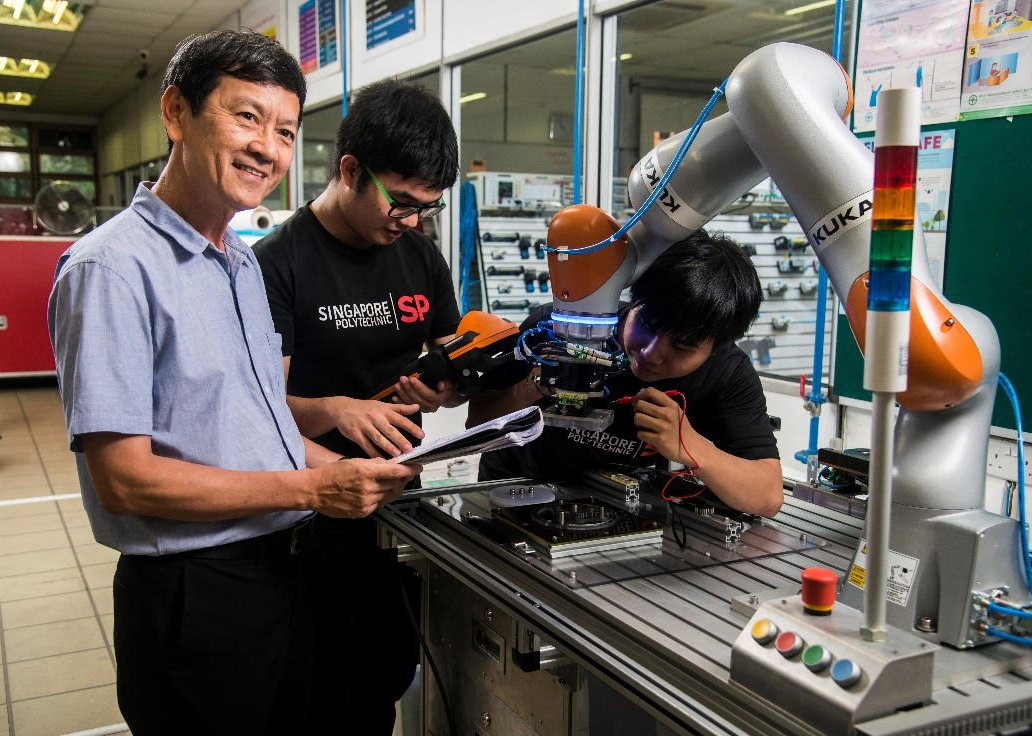In the classroom, some tables were lined with frisbees and compact discs while others had other round objects rolling off them. Students were on a quest to calculate the length of the table, armed only with a single circular object and its known diameter. This is one of many such tasks that Mr Chan Zi Xian designs to encourage students to think critically and creatively when solving problems.
Inspiration: Finding new angles to teaching
As a student, Mr Chan discovered he had an aptitude for simplifying complex concepts when explaining Maths problems to his classmates in junior college.
It helped that he really loved Maths, had excellent teachers guiding him, and along the way, developed a hope to inspire future generations of mathematicians. Teaching became his natural calling.
“We want to build in students the ability to think critically and apply what they’ve learned in class to solve a challenging task, something they have not seen before or something that is novel to them,” says Mr Chan of what drives him.
After nine years teaching at JC level, he found himself intrigued about how basic concepts like addition and subtraction were being taught to younger students. Many conversations later with his wife, a primary school educator, provided him with the impetus to join her by teaching at primary school level.
Transformation: Increasing probability of students’ success
When navigating a relatively unfamiliar primary school landscape as the newly appointed Head of Department, some basics didn’t change for Mr Chan. He continued to find ways to show his students how relevant Maths was to their lives, and to ignite the desire in them to discover mathematical concepts on their own.
To teach geometry, Mr Chan provided students with a variety of cut-outs, some of which could be folded into 3-dimensional cubes while others could not. With little or no clue given, students were challenged to figure out the purpose of the cut-outs. They would excitedly look for patterns and experiment by cutting and folding the cut-outs, all the while treating the task like a game.
Unbeknown to them, they are learning the concept of nets and how some shapes can or cannot be a net of a cube. (For those of us who need a little refresher: A net is what a 3D shape would look like if it is unfolded. A 3D shape can have more than one possible net.) These playful preludes to a geometry lesson add an element of fun and discovery. “That way, students are better able to internalise and remember that experience,” he explains.

“We want to build in students the ability to think critically and apply what they’ve learned in class to solve a challenging task, something they have not seen before or something that is novel to them.”
Mr Chan Zi Xian
Mr Chan also has a heart to develop more opportunities for differentiated learning, where learning is more customised to different levels of learners. After getting to know the varying needs of his students, he designs sets of questions that either stretch the students who are ahead, or reinforce basic concepts for those who need more time for mastery.
Outside the classroom, Mr Chan and his team of Maths teachers also actively identify students for maths competitions to expose them to challenges beyond the standard curriculum.
In the same vein, they created Maths Xcite!, a school-wide programme to engage all students in fun, maths-related activities.
The Rubik’s Cube Challenge has been the biggest hit so far, where students of all ages could be seen racing to twist and turn the puzzle cube in record time during recess. The reason? Mr Chan’s team had set up booths where students could fiddle with the cubes and those who solve the puzzle under two minutes will have their names and times displayed on a leaderboard.
Whenever a challenge was on, cheering spectators would gather, especially when teachers like Mr Chan joined in the competition. During one memorable recess, Mr Chan challenged a Primary 2 student, who ended up trouncing him.
“The fact that a student beat me was a win,” he says. “We wanted to open up our students’ eyes to the possibility of mastering a new skill, even if they’ve never attempted it before. With effort, perseverance and practice, they can achieve success.”
Reflection: A key formula – keep Maths exciting, for himself and others

As part of the North Zone Network Learning Community, Mr Chan collaborates with other Heads of Department and Senior Teachers to organise professional learning workshops for Maths teachers in the region. Workshops, conferences and other professional exchanges also fill his learning calendar, and he feels refreshed from the exchange of views and brings ideas back to his team.
Mr Chan is a big proponent of parent engagement to get students excited about Maths. One way he finds effective is to share with parents screenshots of some of the problem sums that his students are tackling in class, so parents can start conversations about them with their children.
“If they can explain to their parents, then it means that they are able to reason things mathematically, and that’s a crucial skill we want to develop in our students.”





.jpg)
